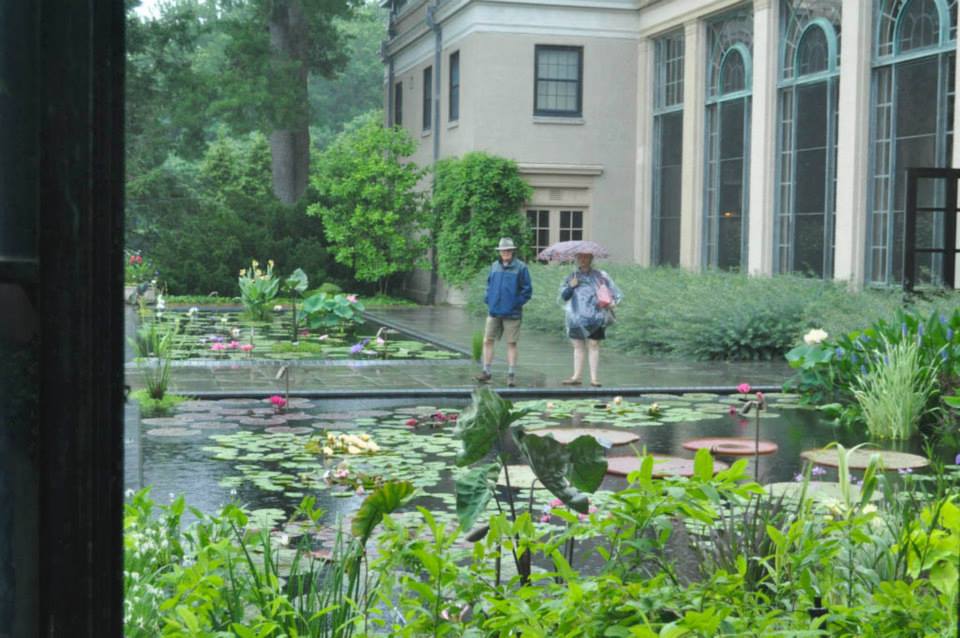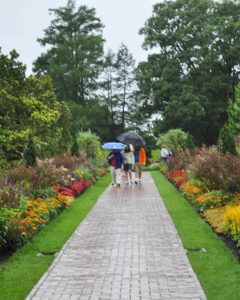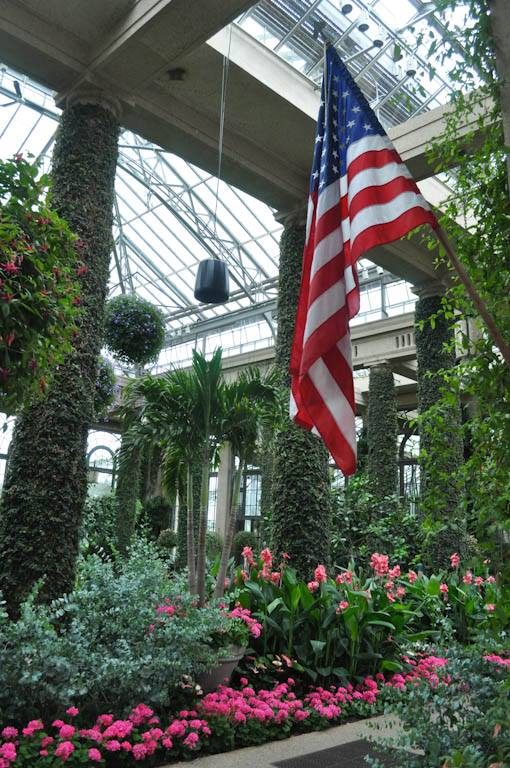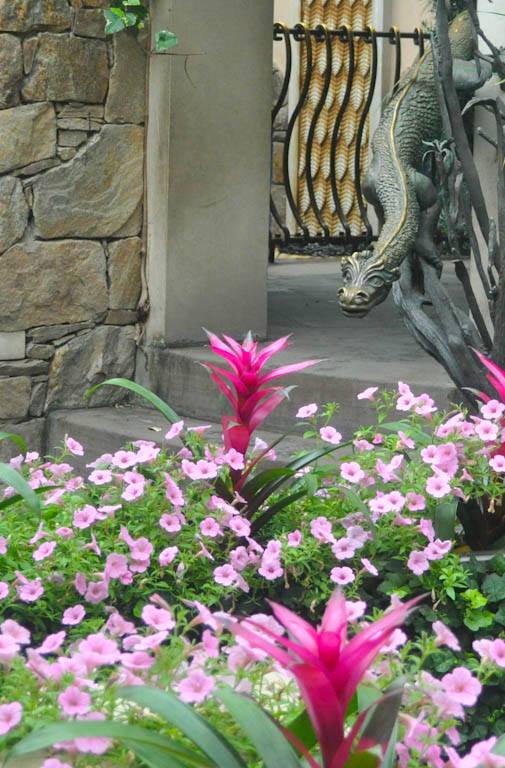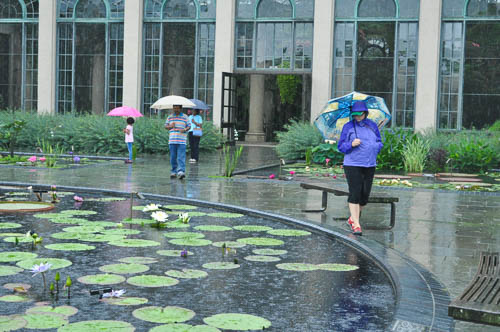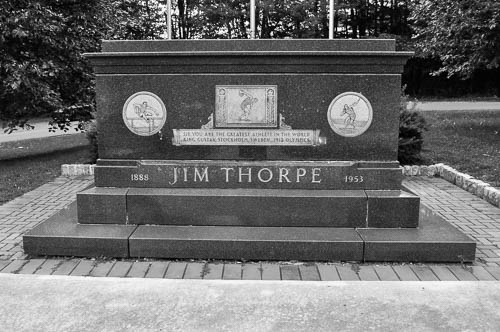
Pennsylvania has a borough named Jim Thorpe.
Jim Thorpe is the county seat of Carbon County.
Here’s a story about Jim Thorpe, PA’s name.
In the 1800’s, white settlers, ah, settled in a gorge in the Lehigh Valley. They named the town “Mauch Chunk.” This came from the Lenni Lenape people’s name for the nearby mountain. I find this ironic, and you will read why in a few paragraphs.
The Lenni Lenape were American Indians.
(I grew up using the term “Native American.” However, the Smithsonian now uses the term “American Indian” in referring to the indigenous peoples of the United States. For this blog post I will use “American Indian.”)
Many white settlers earned their livings from the coal mined above Mauch Chunk. In the 1820’s, they built the Switchback Gravity Railroad from these coal mines.
(Guess why Carbon County is named Carbon County!)
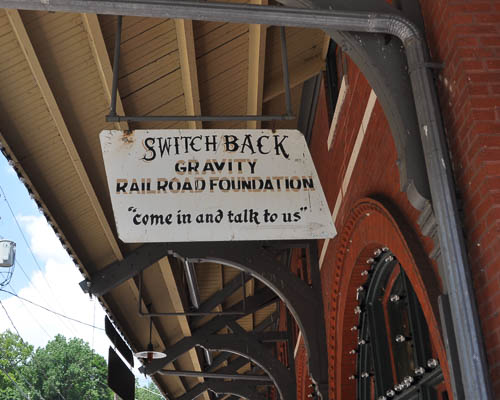
The mine owners employed large numbers of Irish immigrants. The mine owners exploited and oppressed these miners.
The Irish miners formed an illegal labor union. Some also joined a secret society, the Molly McGuires (the Mollies). The mine owners hired the Pinkerton Detective Agency to infiltrate and prosecute the Mollies. Soon, Carbon County hung (hanged?) several alleged members of the Mollies for murder, at the county jail in Mauch Chunk in 1877. Here’s my blog post about this.
A decade later, in 1887, an American Indian named Wa-Tho-Huk (Bright Path) was born in Oklahoma. He belonged to the Sac and Fox tribe.
Wa-Tho Huk was of mixed-race ancestry. Both of his parents were Roman Catholic. His parents had him baptized in the Catholic Church as Jacobus (Jim) Thorpe.
During this time in history, the United States Federal Government set up boarding schools to assimilate American Indians into “white American” culture.
Our government had established the Carlisle Indian Industrial School in Carlisle, Pennsylvania to educate American Indian children. Carlisle is in the central part of our state, near Harrisburg. It is about a hundred miles away from the borough that used to be known as Mauch Chunk.
As a teenager, Wa-Tho-Huk / Jim Thorpe travelled to Pennsylvania to attend the Carlisle school.
Now, one of my favorite podcasts, Radiolab, produced a beautiful episode about the Carlisle Indian Industrial School. I posted the link to this episode’s website here. You can also download it from the platform of your choice. The episode is titled “American Football,” dated January 29, 2015. Radiolab posted photos from the Carlisle school here. If you want to learn about the Carlisle school and its athletic successes, you should listen to this episode.
I can’t rival the information presented by Radiolab. Let me just paraphrase that athletics – especially football – played a huge part in the Carlisle school’s education and culture.
Jim Thorpe excelled in sports at the Carlisle school.
Then, he won gold medals in the decathlon and pentathlon at the Olympics in Sweden in 1912. His special track shoes “disappeared” before the competitions. Jim Thorpe had to wear shoes that he found in a garbage bin when he won his gold medals.
Then he played professional baseball AND professional football.
Jim Thorpe the man died impoverished in 1953. Thorpe’s widow, Patricia, was frustrated by efforts to convince Thorpe’s birth state of Oklahoma to provide a grave / memorial for Thorpe. She claimed that Thorpe’s estate didn’t provide enough funds to bury Thorpe without outside help.
At this time, Mauch Chunk, Pennsylvania existed separately from a neighboring borough named East Mauch Chunk. Both boroughs wanted to “attract new businesses,” according to Wikipedia.
Mauch Chunk and East Mauch Chunk cut a deal with Thorpe’s widow. The two boroughs merged and renamed themselves as “Jim Thorpe, Pennsylvania.” The new borough of Jim Thorpe built a memorial / grave to Jim Thorpe the man.
The borough also paid Mrs. Thorpe.
In return, Mrs. Thorpe agreed to have Jim Thorpe the man buried in Jim Thorpe the borough.
Unfortunately, Mrs. Thorpe agreed to this without the consent of Jim Thorpe’s remaining family, including children from a prior marriage.
In fact, Mrs. Thorpe agreed to have Jim Thorpe’s body transported from Oklahoma to Pennsylvania while Thorpe’s family was in the process of conducting traditional tribal rituals for him.
So, Jim Thorpe’s body was removed from Oklahoma during his own funeral!
Jim Thorpe’s sons later filed a federal lawsuit to have the body returned to Oklahoma. They argued that Jim Thorpe the borough qualified as a museum under the 1990 Native American Graves Protection and Repatriation Act.
However, the Supreme Court refused to hear the case. Jim Thorpe’s body remains in Jim Thorpe, Pennsylvania.
Note that Jim Thorpe the man never actually visited Jim Thorpe the borough (Mauch Chunk) during his lifetime. He did attend the Carlisle school, but from what I can tell, this was Jim Thorpe the man’s only connection to Pennsylvania.
My sisters and I grew up telling each other the ghost story that is connected with the Irish coal miners that were hung at the Carbon County jail in Mauch Chunk / Jim Thorpe.
Then we learned about Jim Thorpe the man.
My sister K. moved to the Lehigh Valley a few years ago. My sister E.R. and I visited her. We took a road trip to Jim Thorpe the borough since we had heard so much about it.
So here’s what we saw:
1.) The Jim Thorpe Memorial
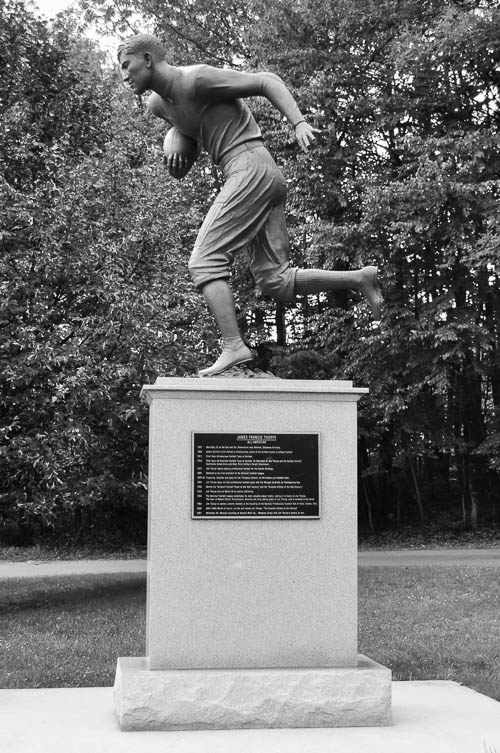
That’s right, we visited Jim Thorpe the man’s grave.
This memorial sits in a wooded area on the edge of town. It’s like a little public park.
The original red marble marker bearing his name has a quote from Sweden’s King Gustav V. This memorial sits on soil taken from Oklahoma. I added a photo of this marker at the very top of this blog post.
The memorial now includes several statues and a sculpture. Through the years, the borough added several smaller markers to educate the public about Thorpe’s life in Oklahoma and at the school in Carlisle.
The memorial has a free parking lot that it doesn’t have to share with any other attractions.
There is no admission fee to visit the Jim Thorpe Memorial.
In my opinion, it’s really easy for families to stop here and reflect on the life of Jim Thorpe.
2.) The old Carbon County Jail, now the Old Jail Museum
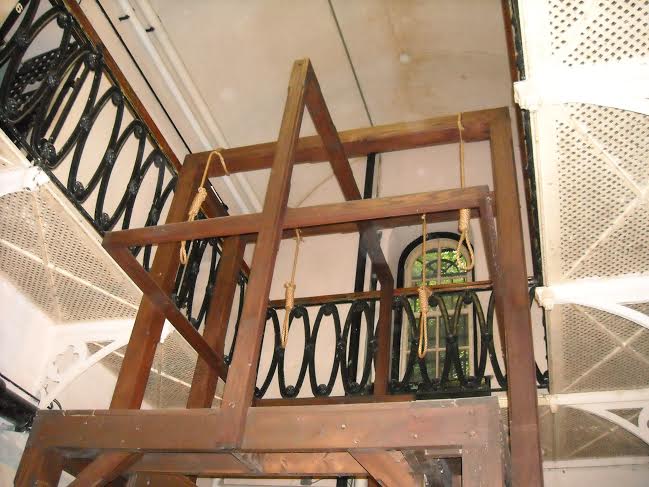
Here’s a photo that my sister K. took of the gallows used at the Carbon County Jail in the 1800’s. This is the jail where the alleged Molly McGuires were imprisoned until their hangings just outside of the jail walls.
You can use this link to see my prior blog post about this event.
The Old Jail Museum’s physical building witnessed a haunted, loaded history. As such, it now carries several ghost stories. The museum features these stories on its tours and also on its website.
One word about the tour: visitors are required to climb up and down several staircases. This is NOT a comfortable tour for people with mobility issues.
Also, we had to park several blocks away from the jail museum on the June Saturday of our visit. Keep this in mind if you plan your own visit.
3.) The Dimmick Memorial Library
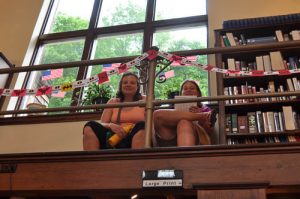
I mention this because my sister K. loves this library. (K. is a librarian, so she likes to survey other people’s libraries.)
Here’s a photo of my sisters K. and E.R. posing on the library’s second floor.
This library is within walking distance of the Old Jail Museum. Also, it sits on a street full of historic buildings that appeal to tourists. If you are sight-seeing and you need to find a public restroom during the library’s operating hours, then you are in luck.
4.) Streets of historic buildings that appeal to tourists.
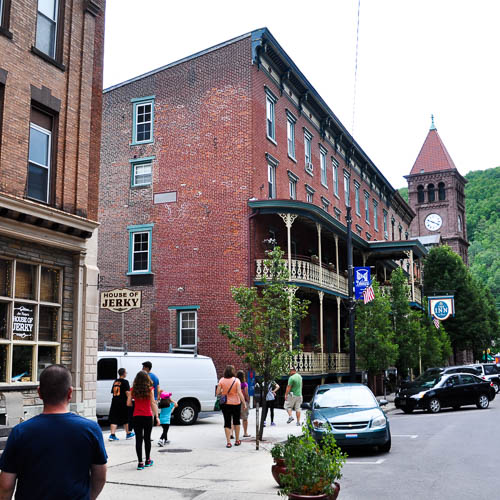
I was only in Jim Thorpe for several hours on this one day. We spent most of our trip at the Old Jail Museum. Then we walked around for a little bit more and ate ice cream. I was exhausted.
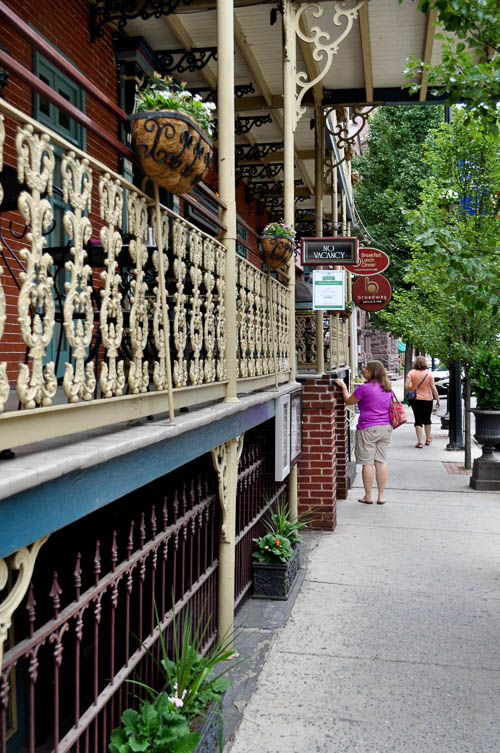
So I didn’t really explore the histories of the borough’s other buildings. After my next visit to Jim Thorpe, I will blog more of its stories.
Here are my sisters again:
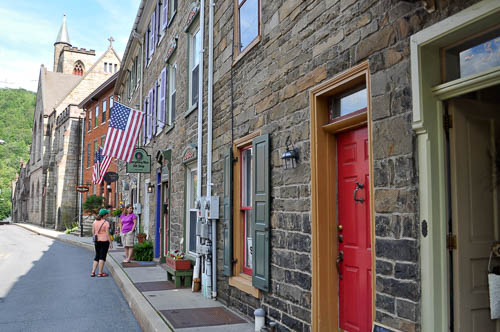
Here is my sister K.’s blog post about her multiple trips to Jim Thorpe.
What towns do you like to visit?
